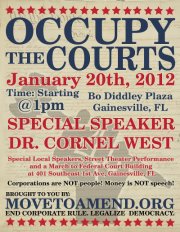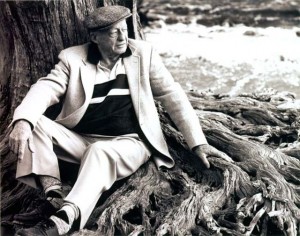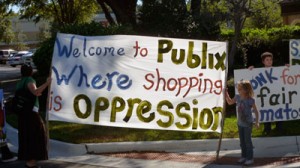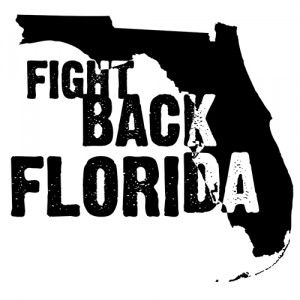Transcript edited by Pierce Butler.
This is the fifth in a continuing series of excerpts from transcripts in the collection of the Samuel Proctor Oral History Program at the University of Florida.
Gainesville resident Jon Anderson, born in Brooklyn, NY, in 1946, spent 28 years in federal service (in the Army and Veterans Administration), earned two Master’s degrees (from FSU & UF), and worked as an elementary public school teacher and in the Florida Museum of Natural History. He was interviewed by Paul Ortiz on December 7, 2009.
When I went there [West Point] in 1964, there were no active wars going on. I think I went to West Point because I figured the uniforms would be good for attracting girls. [laughter] I can’t think of any other reason why I went there. I started there in July of [19]64, then in August of [19]64 was the Gulf of Tonkin incident, which has since proved to be a very dubious reason for entering that war. I found West Point, like most people, most plebes, very very difficult with the hazing and the harassment and all of that. I was able to avoid some of that because I was a runner on the Cross Country team representing West Point. I consider it I was running for my life. [laughter] You got to eat your meals at the training table with the athletes. Meals were the worst place for a plebe because you were just sitting there, right across from an upperclassmen who, if he chose to, invariably would find something wrong with either the way you looked or something you said or something you were doing. So meals were the worst time for most plebes. I was spared that because I ate my meals with the athletes and went on trips.
While West Point seemed to still have some status, it, I think, lost some of the luster with the Vietnam War. It wasn’t quite as impressive to tell somebody you’re going to West Point in 1967 as it was when I started there in 1964.
The attitude about Vietnam was such that I felt a lot of people didn’t wanna hear about any of it. The person who showed the most interest in my Vietnam experiences and would talk with me about it was the leading anti-war protestor at the University of Virginia, which I thought was rather ironic. Other people, it’s like they really didn’t want to hear about it.
While I was at An Khe…that was an interesting place. I ‘member I had guard duty one night, I was in a jeep with a driver, and I’d have to go around and check to make sure that our people were alert, doing what they were supposed to do, that kind of thing. I was driving with this sergeant, and we saw a body alongside the road in the grass. We both figured it was probably a sapper. Sappers were the enemy, who would try to come through the wires with satchel-charges and throw them, either into barracks or into an air field. Sometimes, as they’d go through the wire, they’d get wounded, but they were very tenacious. They were very good soldiers that we faced. The Vietnamese were just excellent. We figured this was maybe somebody that had got shocked trying to come through the wire, and he’s just laying there wounded. So I got out of the truck, and I took my M16, and I couldn’t see very well, and I put my gun, the barrel of it, into his ear. Then, luckily, I looked and saw, it was an American soldier. He was on a real bad trip. Not only was he unconscious out in the middle of nowhere, but he had Captain Anderson stickin’ a rifle right in his ear, you know, with the safety off. Probably, had he moved at all, I probably would have shot him because we were convinced he was a bad guy. Then we knew he wasn’t, so we took him and threw him in the truck. When I got there in 1970, I don’t think I knew anybody that favored the war or thought we were gonna win the war.
At this base, An Khe, I mentioned before, it had a seventeen-mile perimeter around it. There was this bus that went around that not everybody knew about, just some select people. It was called the Magical Mystery Bus. The Magical Mystery Bus was a bandit bus. It belonged to nobody. It wasn’t on anybody’s records. It went around the posts picking up people to do drugs on the bus. It would pick up people at designated places, and if you were in the know, you would know that around eighty-thirty at night, you need to be near the mess hall for the 501st Engineer Battalion. The bus would stop, and guys would get on. They might stay on it for a half hour. They might stay on it for five or six hours. It mainly just went around at night. It didn’t operate during the day. Then they would park it someplace where nobody questioned it.
All the officers that I knew that worked for the General [staff], we would never take time off because we just lived and breathed what was going on with the war. That was what we did, and I think we had a sense of we were on the General staff, and you got people out there in the jungle, and you had better do everything you could to protect them and give them services. If not, you know, they could get blown away. So, everybody would work, I thought, very hard in trying to do their job, but nobody was really interested or talking about, we’re gonna win this war.
When I was in Quinn Yan, I was the commander, but I had a garrison about the size of a football field. Quinn Yan was a big city on the coast. There were a lot of little bases scattered around the city, and I was in charge of one of them. Okay, well, one day, at this place in Quinn Yan, my commanding officer drove by my garrison, and he saw girls there. I had ten to twelve men. I’d say three-fourths of them had girlfriends-slash-prostitutes that lived with them all the time. They lived there in their hooches and were with them. I knew all the girls. They all knew me. So, he chewed me out and said, you can’t have girls on your post, you know, on your base. You gotta get rid of ‘em. So I called all my soldiers together, and I said, my boss drove by and saw your girls walkin’ around on the post. So let’s do this. Keep ‘em hidden so that I can’t see ‘em. A couple nights later, we…there was a rocket attack. There weren’t rockets hitting on my base, but they were hitting someplace in the Quinn Yan area, so all these sirens go off [making siren noise], and then you run for the bunkers. So I run down to the bunker, it’s nighttime, and there’s this young sergeant in there. I forget his name. I’ll call him Sergeant Thomas. I look at Sergeant Thomas, and I forget his girlfriend’s name, but I knew his girlfriend. I’ll call her Me Tring. I said, Sergeant Thomas, where’s Me Tring? He said, she’s upstairs in the hooch. I said, what’s she doin’ up there? He said, she’s under the bed. Why is she under the bed? Because it’s a red alert. There’s rockets coming in, and I knew that when we have red alerts, you come to this bunker, and you said you didn’t wanna see the girls at all. I remember saying to him, God damn it, go up and get her right now. So I made him run up during the rocket attack, get the girl, and bring her down. Then I called everybody together the next day. I said, okay, let’s go over this again. I don’t wanna see the girls except during red alerts, rocket attacks, mortar attacks. The girls go in the bunkers no matter what, whether I’m there or not. Everybody understand that?
So, I had Vietnamese that I knew, but I don’t ever remember having discussions with the war with any of them. Now, when I was at Quinn Yan though, I did know a man, who’s still alive, Don Millus, and he was from Yale, but he was a conscientious objector. He and I wrote a letter that was published in the New York Times in 1971 protesting the war. I thought, boy, they’re gonna take me and drop me out in the middle of the jungle someplace, armed with only a small knife, and just leave me there. But then, talkin’ to him, he said, nah, none of these people read the New York Times anyway. [laughter] I don’t remember conversations with people, you know, about the war, you know. It just didn’t happen that much. It just wasn’t discussed.
You know, you’d hear of things like, after World War Two, you’d go in a bar, and they buy you a drink ‘cause you’re a veteran. That only happened to me one time, and it was at a bar right over here on campus, and the guy who bought me a drink was another Vietnam veteran.
An audio podcast of this interview will be made available, along with many others, at www.history.ufl.edu/oral/feature-podcasts.htm.
The Samuel Proctor Oral History Program believes that listening carefully to first-person narratives can change the way we understand history, from scholarly questions to public policy. SPOHP needs the public’s help to sustain and build upon its research, teaching, and service missions: even small donations can make a big difference in SPOHP’s ability to gather preserve and promote history for future generations.
Donate online or make checks to the University of Florida, specified for SPOHP, and mail to PO Box 115215, Gainesville, FL, 32611.
 Homegrown Gainesville community organizer and swell human being Mark Piotrowski, who most recently designed the Iguana in its revived presence over the past year, has embarked on a new phase of his life with a move to Tallahassee to work with the Florida Education Association and his impending entry into fatherhood with his partner Janeen. That will be one well-loved kid.
Homegrown Gainesville community organizer and swell human being Mark Piotrowski, who most recently designed the Iguana in its revived presence over the past year, has embarked on a new phase of his life with a move to Tallahassee to work with the Florida Education Association and his impending entry into fatherhood with his partner Janeen. That will be one well-loved kid.










